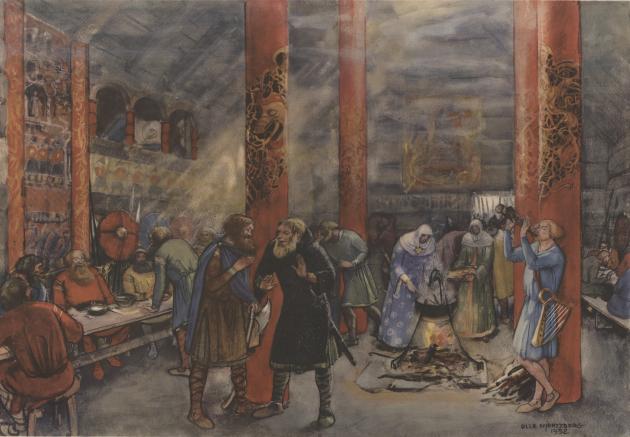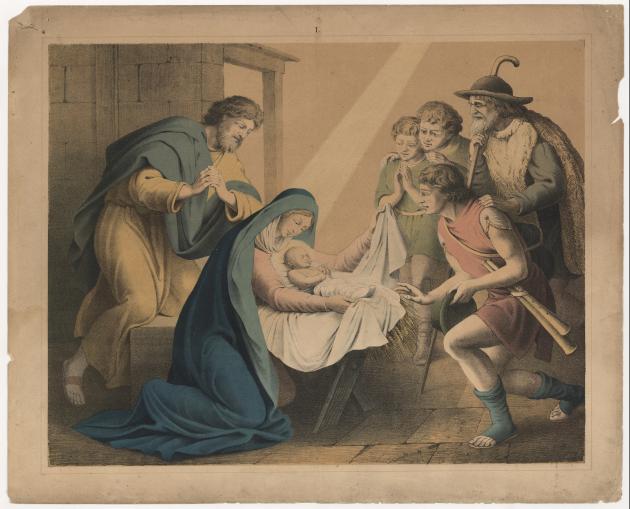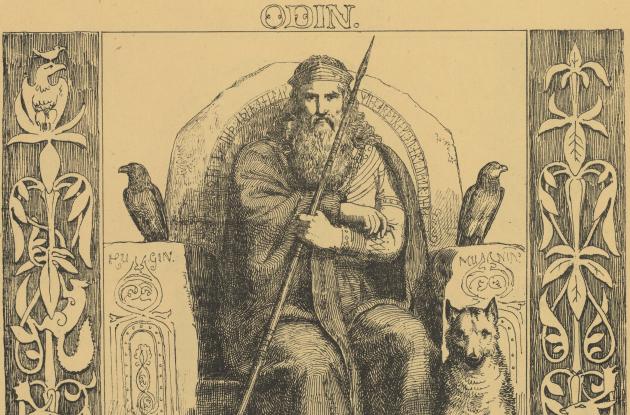Where do our Christmas traditions come from?
When we celebrate Christmas today, we celebrate the birth of Jesus. But Christmas has been celebrated long before Christianity came to Denmark. Read more about our pre-Christian Christmas traditions.
Christmas (Old Norse: 'jól')

Photo: Olle Hjortzberg
The word Christmas has a long pre-Christian etymology. It is believed to be traced all the way back to the Gothic language in the word 'jiuleis', which was the name for either November or December. The word appears again in the Old English word 'guili' (today 'Yule'), which described the winter months of December and January. In Old Norse, the word is most often linked with the god Odin, who, among many other names, bore the names Jòlnir (he who is Christmas) and Jòlfadr (Father Christmas).
The celebration of Christmas probably took place over several ritual feasts held at various times in December or January. Some believe that pre-Christian Christmas was at the winter solstice (21 or 22 December), others that it was at midwinter (between 19-21 January). There have most likely been many variations of the parties depending on where in the country you were.
'Christmas' was held in the winter to celebrate that we were now moving towards brighter times again. It was a series of transition parties, which probably also involved some of the traditions we associate with New Year's today, such as the New Year's resolution. Christmas was celebrated with lots of food and mead, and people toasted and sacrificed to the Nordic gods and prayed for a good year to come.
Abundance was already in pre-Christian times an important part of Christmas, as it was supposed to symbolise the coming year's fertility. Just like today, nothing should be missing at Christmas - neither food, drink nor gifts.

Photo: Sandberg
Christianity wins
The reason why we know relatively little about the celebration of Christmas before Christianity is because there are no written sources from that time. The very few Nordic sources (bard songs and sagas) that use the word were first written down in the Christian era, and they therefore reflect the world view of the Christian author. Only very few Nordic sources indicate that Christmas in the Nordics was also a special event in the winter in pre-Christian times.
When Christianity won its way into the Nordic countries, they initially tried to get the people to stop celebrating in the winter months. Later, the Christmas we know today was tried to be introduced under the name 'Kristmesse'. This tradition shared many characteristics from the old, pre-Christian traditions, and was therefore easier to introduce.
In the Nordic countries, the Scandic word for Christmas, 'jul', survived the introduction of Christianity, while in other parts of Europe words that originated from Christianity began to be used. In English, for example, the word 'Yule' has been replaced by the word Christmas. Likewise, the large consumption of food and drink seems to have lived on in new forms. Of course, people no longer toasted in honour of Odin and Frey, but celebrated the birth of Christ.
Today we see more and more people choosing to mark the Winter Solstice on the 21st and 22nd of December in various ways that include many of the old, pre-Christian customs. So although most people still celebrate Christmas Eve with the Star of Bethlehem on top of the Christmas tree and sing about the child who was born in Bethlehem, there is also a newfound interest in other ways of celebrating the transition between light and darkness.
